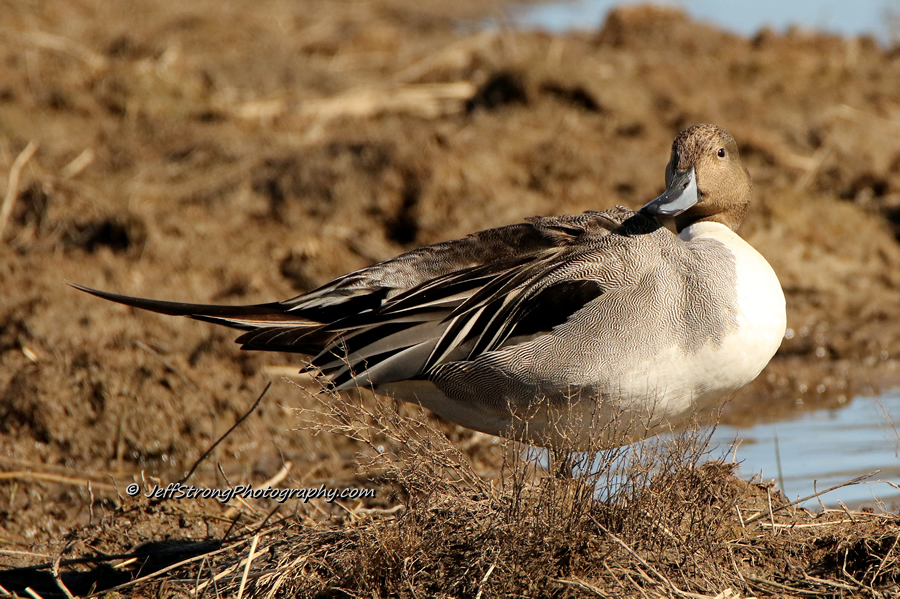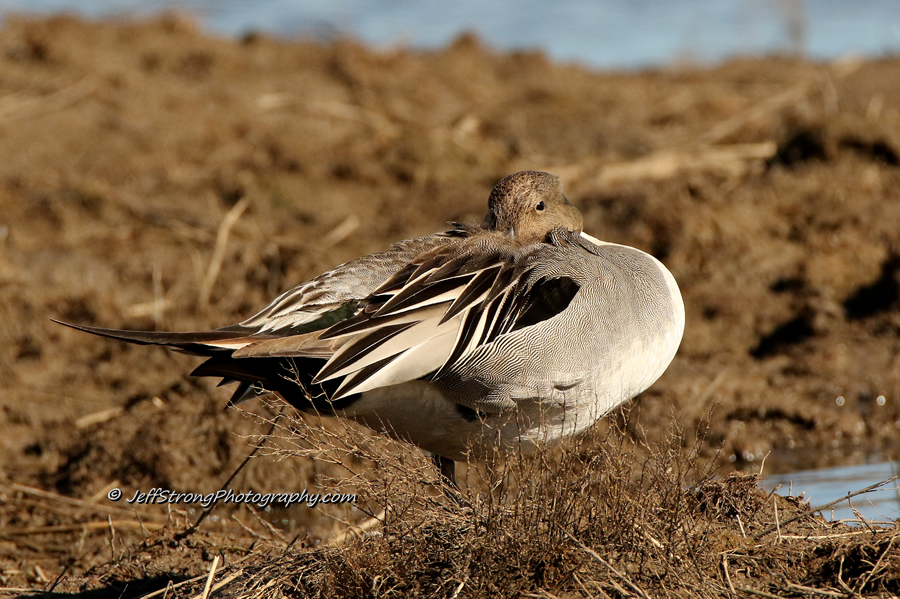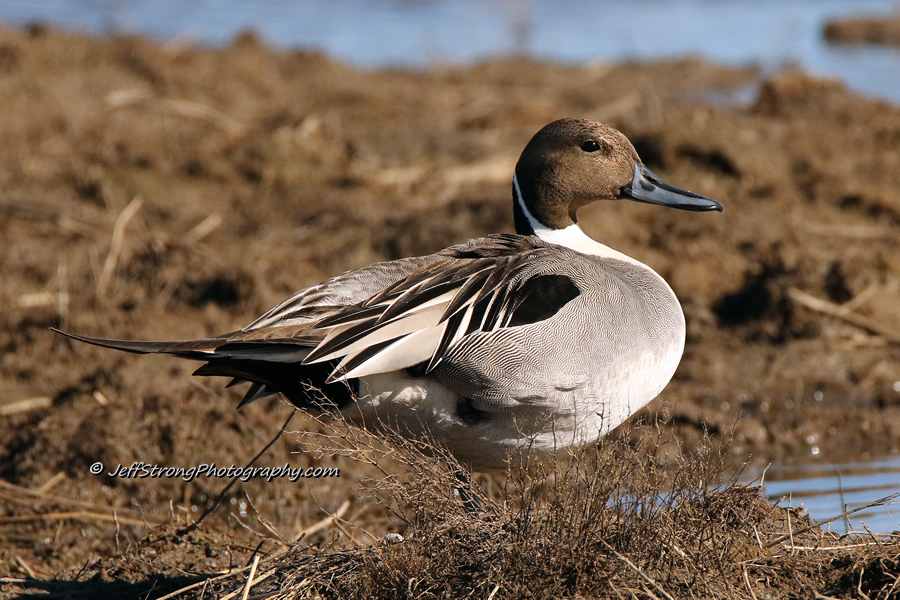The northern pintail, oftentimes referred to as a sprig, is widespread across North America, and has been categorized as one of the most numerous duck species in the world.
The northern pintail is also one of the most beautiful ducks in the world.

When it comes to waterfowl, I am always in awe when I see a northern pintail.
They are, without a doubt, my most favorite of ducks and quite possibly, I might add, my most favorite of all waterfowl, as well.
Beautiful and elegant is the only way I could describe the northern pintail duck with its slim, long neck which forms a graceful silhouette in flight.
Its soft but alluring colors can please even the most discerning of birder’s palettes.
Where does the northern pintail live?
The northern pintail lives in marshes, prairies, salt bays, and freshwater ponds.
Most of the North American population of northern pintails breeds in the northern plains of the United States and across the majority of Canada.
They spend their winters on the Mexico and United States border, with some of them also spending the cold winter months along the west coast.

There are, however, a few pockets of northern pintails where wintering and summer ranges overlap in the western United States.
According to the Audubon website, Utah is in one of those pockets where it is common to see pintails year-round.
The Bear River Migratory Bird Refuge is, in fact, one of the places here in Utah where I most frequently see the northern pintail, especially during spring migration.
Do northern pintails dive?
The northern pintail is referred to as a puddle duck, meaning it forages in shallow waters by tipping upward with its’ tail sticking up and head under the water’s surface.
Northern pintails don’t dive, per se, in the same manner as a true diving duck does, such as the canvasback, for example, but they can totally submerge themselves under the water and swim for short distances to evade predators.
What does the pintail eat?
The northern pintail eats seeds, plant material, and insects, depending on the time of year and available food sources.
During fall and winter, the northern pintail’s diet is mostly plant material, especially seeds of grasses, sedges, pondweeds, and some waste field grains when they are available.
During the summer months, insects, mollusks, and crustaceans make up the majority of the northern pintail’s diet, while their ducklings utilize mostly insects due to their high protein content.

Easy to spot during spring migration, the pintail duck is often a wary bird and can become quite secretive during its flightless stage during the summer molt.
Because of this skittish personality, I rarely get great opportunities to photograph the northern pintail but, however, last April I came across a small flock of mallards and a lone drake pintail sitting in a farm field adjacent to a local state wildlife management area in Northern Utah.
The drake pintail stood out among the rest with its long tail and curvy neck.
Fortunately, it was just in range of my 600 mm lens, so I was able to get a few good images during this rare close encounter.
I always try and keep a sharp eye out for the northern pintail during spring migration.
This is the time when the drakes are fully colored and are boasting of their long pin-like tails, hence the name pintail.
Photographing them in their full plumage is a rare treat, especially this up-close and personal.

As previously mentioned, the place where I always see the most northern pintails during spring migration is the Bear River Migratory Bird Refuge.
The refuge attracts a variety of waterfowl each spring for both migrating and nesting purposes.
The Bear River Migratory Bird Refuge has a self-guided auto tour route, typically open every day of the year from sunrise to sunset, where bird enthusiasts can get a first-hand look at the northern pintail as well as hundreds of other migratory species of birds.

To visit the Bear River Migratory Bird Refuge and its wildlife education center, start by visiting their website for more information about the refuge.
The refuge is located near Brigham City, Utah, and is about an hour north of Salt Lake City but is an easy drive northward along interstate 15 from the state capitol.
Don’t forget to sign up for blog post notifications on our subscribe page. It is our intent to keep you posted about things pertaining to the refuge from our own personal experiences that we find interesting and enlightening.
Bird Watching Apparel
If you’re looking for birding-related gifts and apparel for someone, take a look at our online store featuring some of our own photographs turned into unique gifts.

As a reader of our blog, we offer you 20% off all products on our store by using the coupon code save20 during checkout.
Visit our Bird Shirts and More online store to check out our products. New products are constantly being added so check back often.



